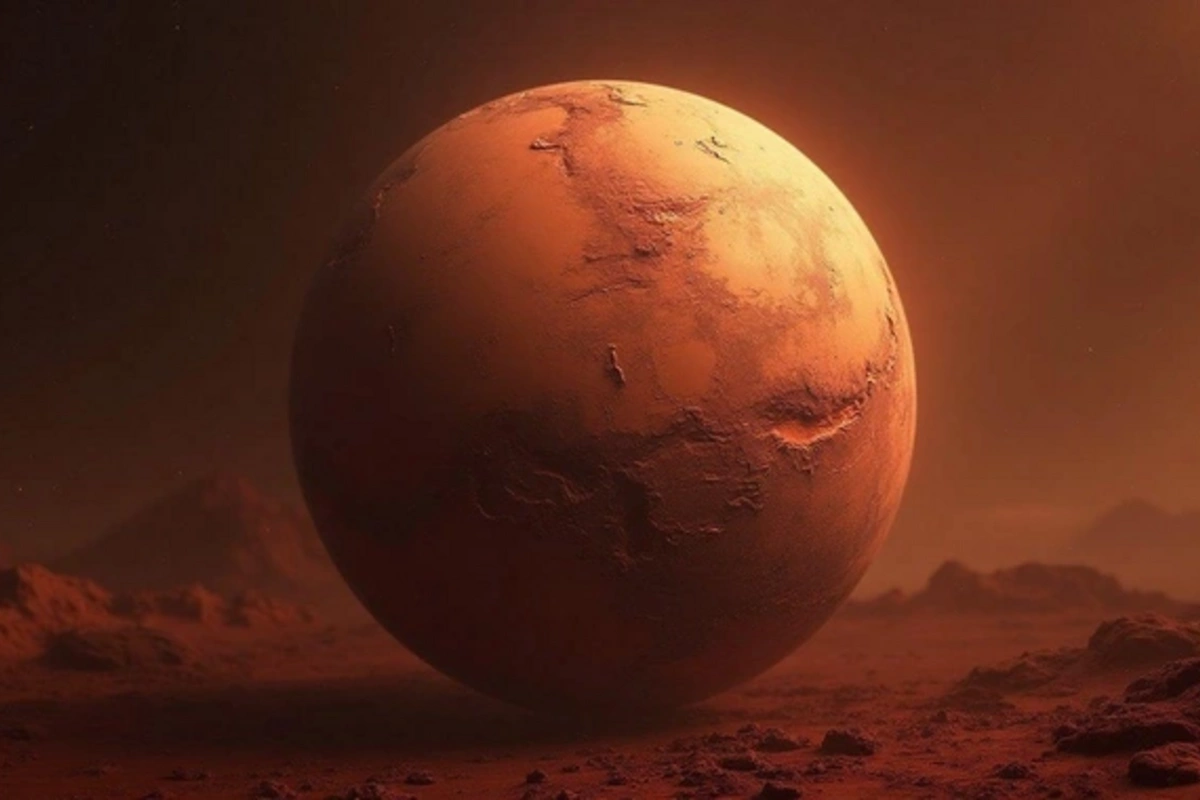18 Jun , 14:22
0

Scientists Revealed the Mystery of Mars' Unusual Shape
An international team of scientists from the California Institute of Technology (Caltech) and the European Space Agency (ESA) presented a revolutionary study shedding light on the mysterious asymmetry of Mars. The results of the work, published in the prestigious journal Nature Astronomy, offer a new perspective on the formation of the Red Planet's unique terrain.
Mars has long intrigued scientists with its unusual topography: the northern hemisphere is a vast lowland, while the southern hemisphere is characterized by high plateaus and numerous craters. This mysterious feature, known to specialists as "Martian crustal asymmetry," had not found a convincing explanation for decades.
Dr. Elizabeth Harper, who led the study, claims: "We discovered that Mars' asymmetry could have arisen due to uneven distribution of magma in the planet's mantle about 4 billion years ago."
During their work, the scientists utilized the computing power of the ESA Space Research Center's supercomputer in Noordwijk. Analysis of data obtained by the Perseverance rover and the Mars Express orbital spacecraft revealed significant differences in crustal composition between the hemispheres, confirming the theory of uneven magmatic flows at the dawn of the planet's formation.
Gravitational maps of Mars, created based on data from the MAVEN mission, clearly demonstrated a significantly thinner crust in the northern hemisphere compared to the southern, which fits perfectly into the proposed model.
The study also puts forward an intriguing hypothesis about the existence of an ancient ocean in the northern hemisphere. Professor Lucas Meyer from ESA notes: "Our models show that the lowlands could have been formed under the influence of water masses that enhanced erosion and redistributed crustal material." Chemical analysis of the soil conducted in Jezero crater discovered minerals characteristic of an aquatic environment, which indirectly confirms this theory.
The new data has enormous practical significance for future Martian missions. Understanding the planet's structure will help determine optimal landing sites for research vehicles and placement of potential bases. NASA and ESA have already announced a new mission in 2030 that will focus on studying the mysterious northern lowlands.
The success of the research was made possible by unprecedented collaboration between specialists from different fields – from planetology to computer modeling, which allowed creating a comprehensive picture of Mars' evolution.
The scientific team will continue analyzing incoming data and plans to integrate them with results from future missions. Special hopes are placed on ExoMars 2028, which plans to drill the Martian crust in the northern hemisphere to a depth of up to two meters, which could definitively confirm or refute the hypothesis about an ancient ocean.
This research opens a new page in the study of the Red Planet. Scientists are confident that further discoveries will not only reveal the secrets of Mars but also help better understand the formation processes of all terrestrial planets.